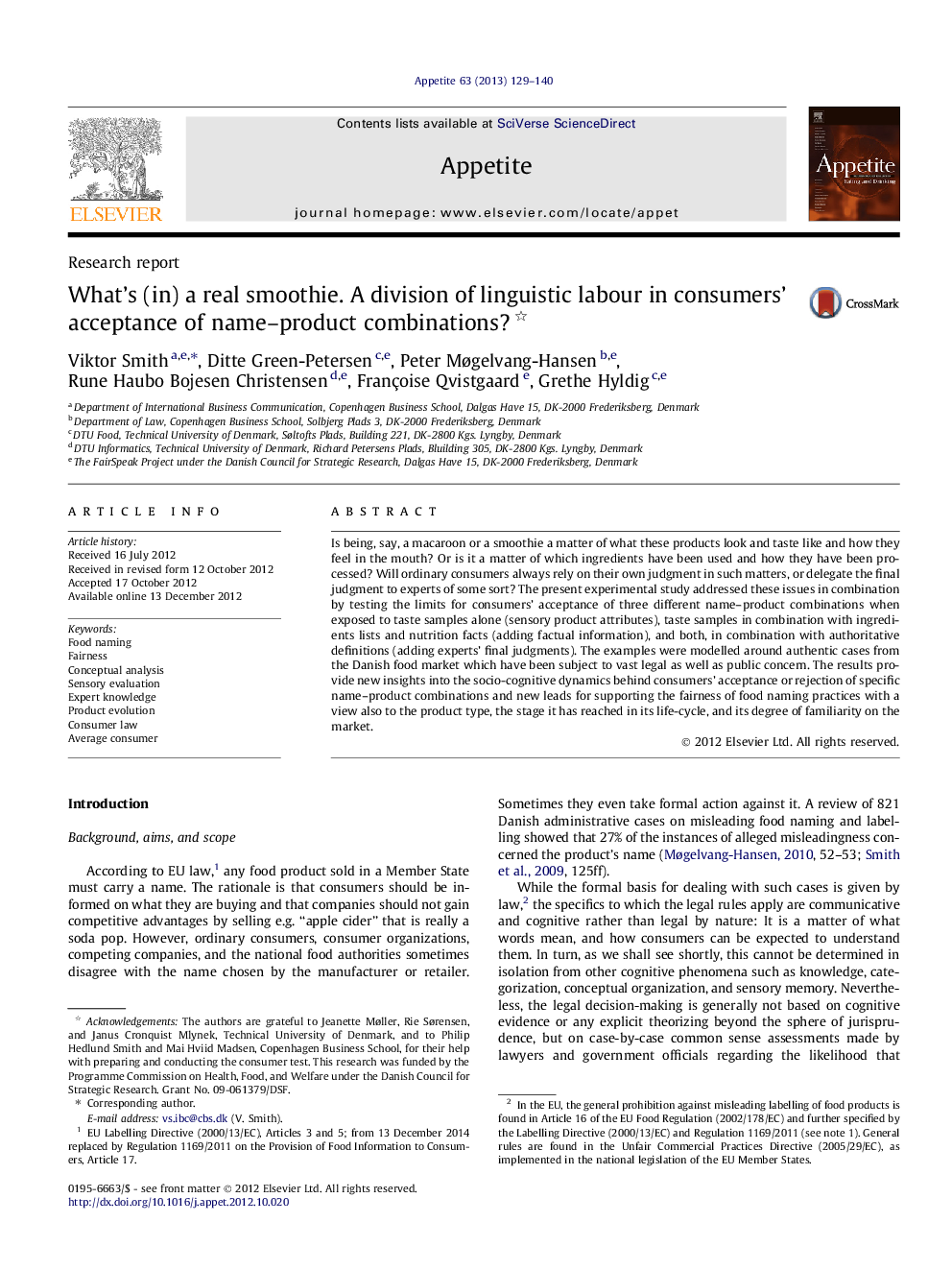| Article ID | Journal | Published Year | Pages | File Type |
|---|---|---|---|---|
| 939665 | Appetite | 2013 | 12 Pages |
Is being, say, a macaroon or a smoothie a matter of what these products look and taste like and how they feel in the mouth? Or is it a matter of which ingredients have been used and how they have been processed? Will ordinary consumers always rely on their own judgment in such matters, or delegate the final judgment to experts of some sort? The present experimental study addressed these issues in combination by testing the limits for consumers’ acceptance of three different name–product combinations when exposed to taste samples alone (sensory product attributes), taste samples in combination with ingredients lists and nutrition facts (adding factual information), and both, in combination with authoritative definitions (adding experts’ final judgments). The examples were modelled around authentic cases from the Danish food market which have been subject to vast legal as well as public concern. The results provide new insights into the socio-cognitive dynamics behind consumers’ acceptance or rejection of specific name–product combinations and new leads for supporting the fairness of food naming practices with a view also to the product type, the stage it has reached in its life-cycle, and its degree of familiarity on the market.
► We investigated the role of taste, facts, and experts’ judgments in name acceptance. ► Consumers told a “real” smoothie from an industrial with no help from experts or facts. ► Consumers judged a mainstream industrial macaroon as more “real” than a classic one. ► Experts’ judgment reversed some consumers’ idea of “real” macaroons. ► Fairness assessments of name–product combinations require individualized testing.
